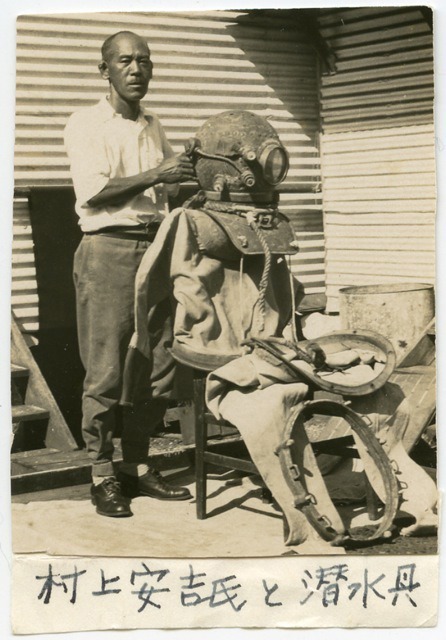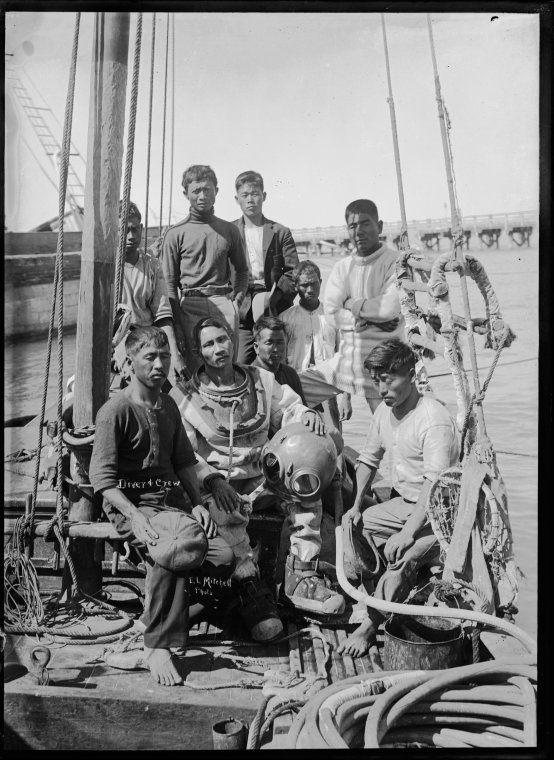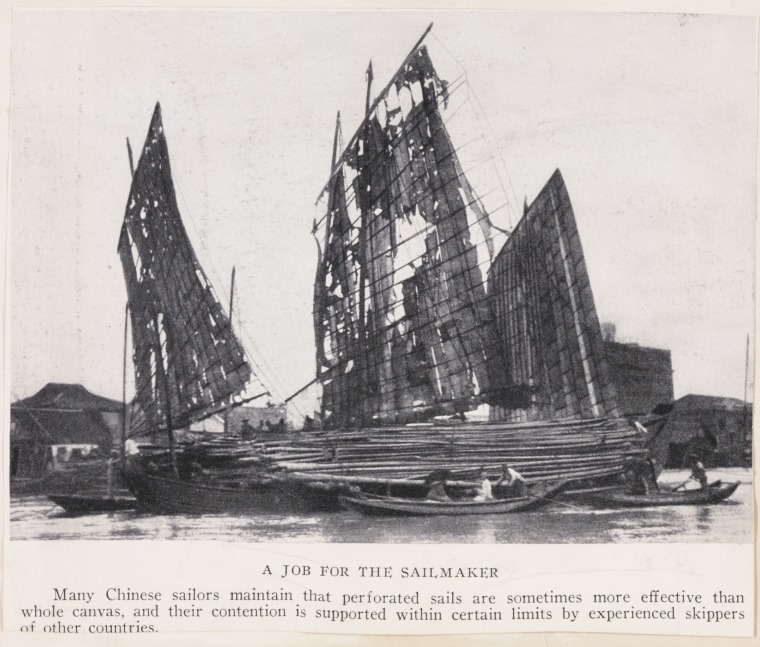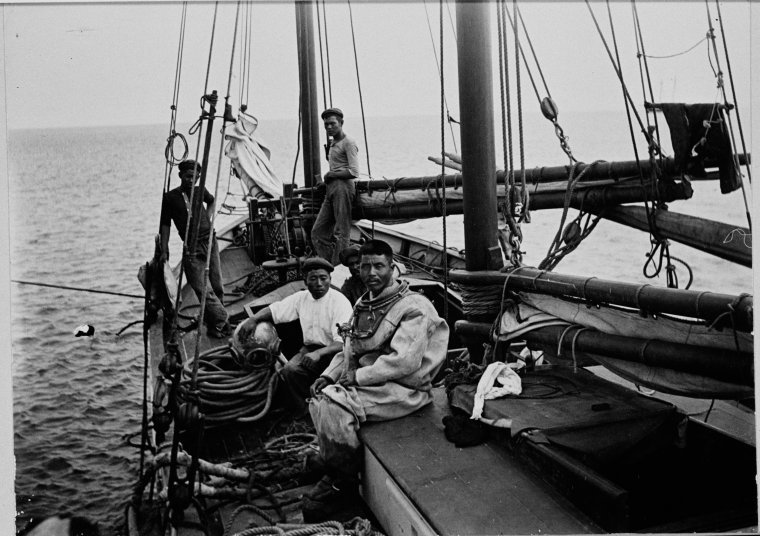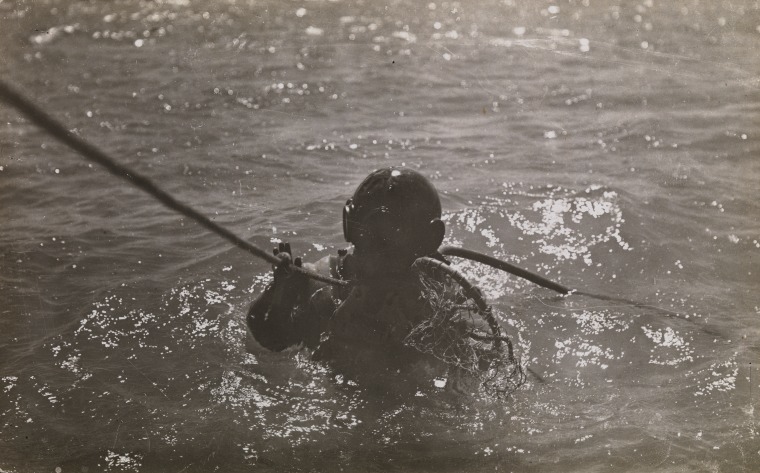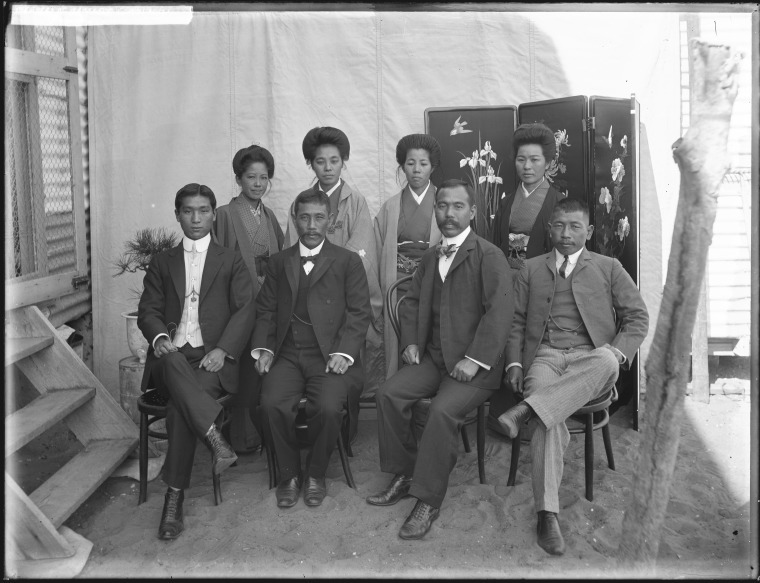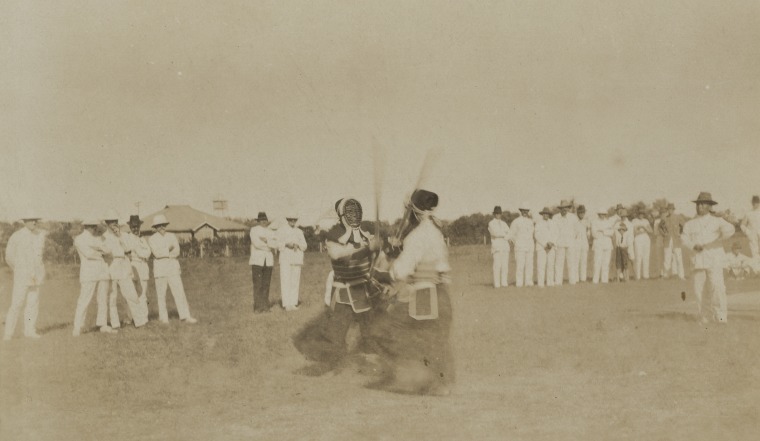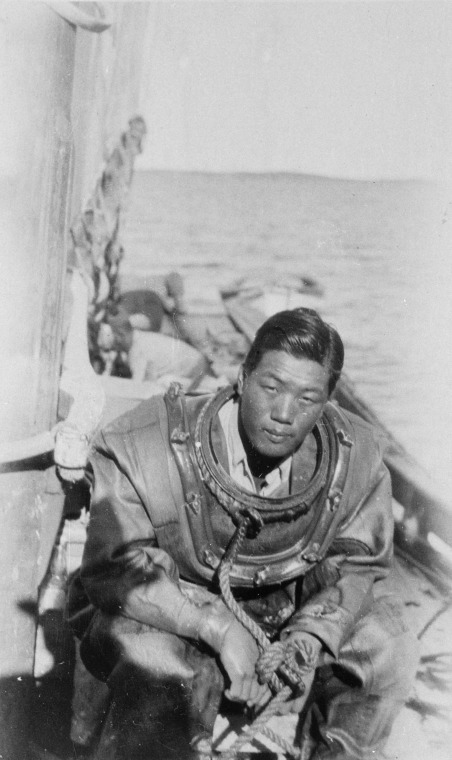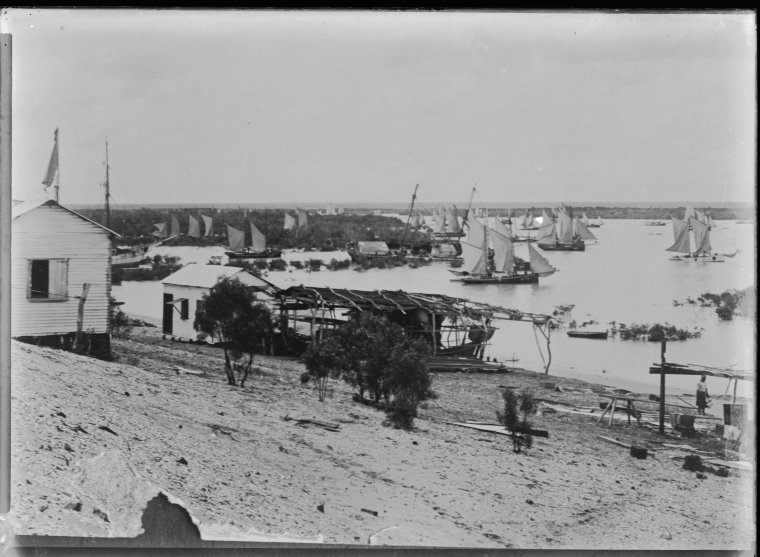Pearl Divers
When we think of the pearling industry, we often think of pearls used for jewelry, but in the late 19th and early 20th Century, the focus of the industry was the collection of pearl shell for buttons, buckles and ornamental items. Western Australia’s commercial pearling industry started in the 1850s in Shark Bay and, although Onslow and Cossack also had thriving industries attracting large numbers of immigrants seeking employment, by 1910 Broome was the largest pearling centre in the world. Between 1900 and 1914, Australia was supplying over half of the world’s pearl shell to places such the United Kingdom, America and Japan.
In the early days of the industry, shell was collected in shallow waters but with such an influx of ‘Pearlers’, the shallows became depleted. Mariners began sourcing the shell from deeper waters using far more dangerous methods that involved cruelly exploiting Aboriginal and Asian crews. The effects of fatal diseases and abuse by pearlers significantly depleted Indigenous populations. This led pearlers to venture to unregulated areas to procure Aboriginal labour through ‘blackbirding’ – the use of force or deception to obtain workers. Such practices were often sanctioned by authorities, who insisted that the Aboriginal people had volunteered their services. Nevertheless, various missionaries, government officials and ordinary citizens alleged that pearling was based on slavery.
Chinese entrepreneurs, by hard work and frugal living, outnumbered the European pearlers 3:1. In 1886 the Europeans petitioned to have the Chinese excluded from Shark Bay and the Colonial Government introduced restrictions on seabed leases. The Chinese pearlers were forced to sell their equipment, lose their livelihoods and leave the area in the face of growing racism.
With the onset of diving suits, businesses imported cheap labour from Asian countries such as Japan, China, Malaysia and the Philippines. These workers were required to spend hours under water collecting pearl shell and endured a mortality rate as high as 50%. Almost all divers suffered from the bends (diver’s paralysis) at some time.
By 1900, of the 1,295 people working in the Western Australian pearling industry, 38% were Malays, 20% Philippine, 18% Japanese, 0.9% Aboriginal and 0.8% Chinese. By 1920, Japanese divers comprised one third of the workforce and by World War II, nearly half were Japanese.
From as early as 1886, government regulations imposed heavy restrictions on Japanese (and other non-Caucasian) workers and their duties. After Federation, the Immigration Restriction Act (White Australia Policy) put more limitations on the immigration of divers in the industry but it was soon realised that it was difficult to attract employees to such a dangerous and modestly paid job so, in 1916, Asian pearlers were made exempt from the government act.
The Japanese community has made a long-lasting impact to the culture of Broome, its architecture and way of life.
Focus Questions
- What were some of the dangers for deep sea pearl divers? What was ‘the bends”?
- What are some examples of the Japanese pearl divers’ legacy on the town of Broome?
- How has the Western Australian pearling industry changed over time?
- Find examples of the technology of pearl diving in the early 1900s and compare it to the technology of today.
- What were the uses of pearl shell and what materials replace it today?
Key words
You may wish to find out more about Japanese pearl divers. The following key words can help you find information:
pearling
pearl diving
pearl shell
industry
indenture
migration
Websites
The following websites can help you with reliable information:
State Library of Western Australia
Western Australian Museum - Lustre: Pearling & Australia

